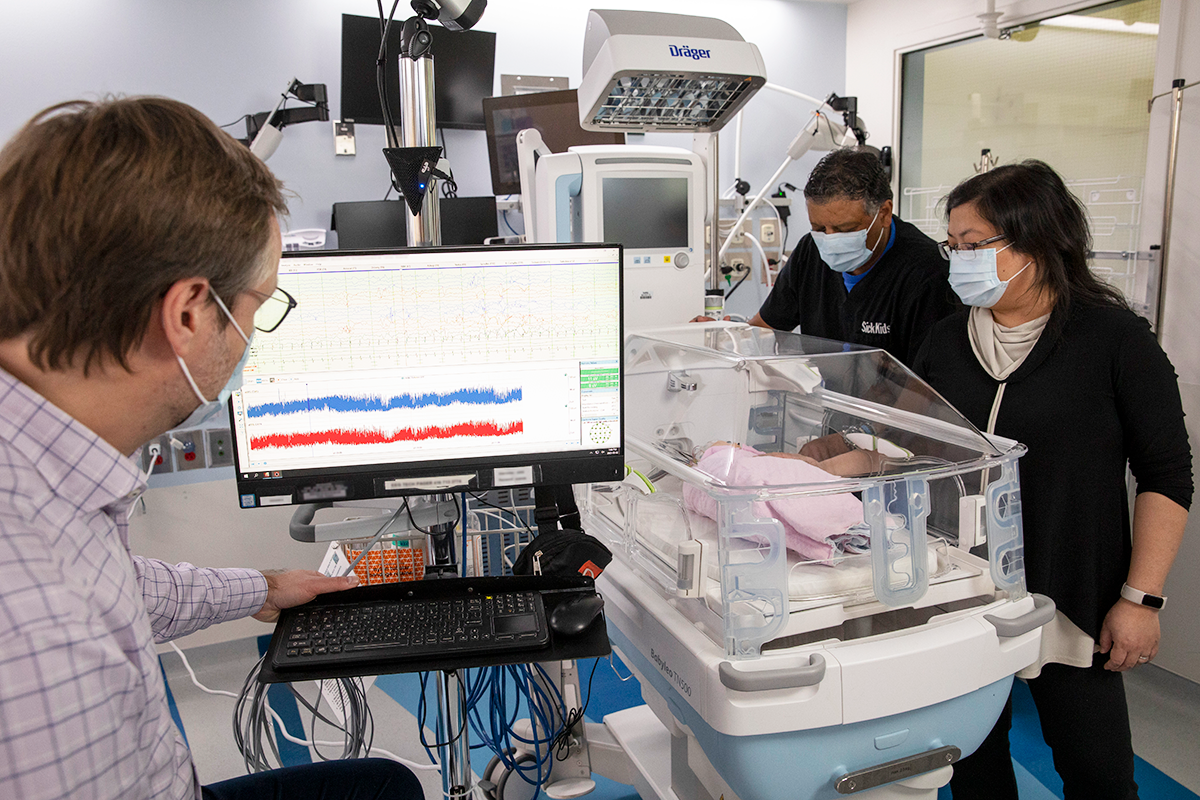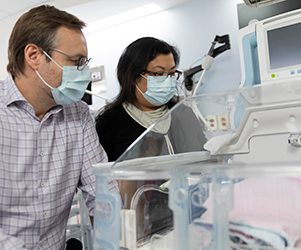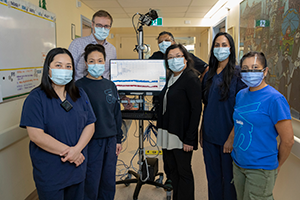Study demonstrates importance of monitoring electrical seizures in newborns
Summary:
Electrical seizure burden in newborns with neonatal encephalopathy is associated with language and cognitive outcomes at 18 months of age.
New research highlights the importance of monitoring the total amount of time a newborn experiences seizures by identifying a correlation between the duration of electrographic seizures in infants with neonatal encephalopathy and cognitive outcomes.
While some seizures seen on electroencephalographic (EEG) monitoring show clinical characteristics that are typically associated with seizures, such as abnormal uncontrolled movements, most seizures show no clinical signs and can only be identified through brain activity recorded on the EEG.
Neonatal encephalopathy (NE), a condition where a newborn’s brain function is altered due to injury, is most commonly caused when the baby’s brain doesn't receive enough oxygen or blood flow around the time of delivery. Therapeutic hypothermia is typically used to cool a newborn’s body temperature after a traumatic birth and to help reduce inflammation. However, seizures still occur in around 25 per cent of newborns with NE.
In a study published in Neurology, a research team from The Hospital for Sick Children (SickKids) found that higher seizure burden was associated with lower language and cognitive scores for children tested at 18 months of age.
“Because of their lack of clinical features, the significance of electrographic seizures is often overlooked,” says Dr. Emily Tam, Staff Physician and Senior Associate Scientist in the Neurosciences & Mental Health program. “Our research strengthens the case for monitoring every newborn with neonatal encephalopathy.”

Understanding the impacts of seizure burden

Using a cohort of 100 newborns at SickKids with NE, the research team led by Tam and Dr. Cecil Hahn examined both the peak intensity of the seizures and total seizure burden with the help of a team of SickKids EEG Technologists. At 18 months of age, they examined the motor, cognitive and language composite scores of all infants involved in the study as well as noted whether the infants were later diagnosed with cerebral palsy or whether they reported seizures after they were discharged.
When analyzing the data, the team also took into consideration the amount of anti-seizure medications given to the infants – a first for this research area.
“We wanted to understand what is causing these poor outcomes in infants with neonatal encephalopathy, whether it is anti-seizure medications, the underlying brain injury or the seizures themselves,” says Hahn, Staff Physician and Senior Associate Scientist in the Neurosciences & Mental Health program. “By adjusting for medication, we took away some of that mystery and can now better understand the impact of seizure burden on developmental outcomes.”
The findings showed that although seizure burden was not associated with epilepsy or cerebral palsy, a seizure burden of 60 minutes was associated with a clinically significant decline in language scores, whereas a seizure burden of 70 minutes was associated with a decline in cognitive scores at 18 months of age.
“While not every seizure has a huge impact on neonatal development, our research provides hope that by reducing the total duration of seizures in newborns, we may be able to improve developmental outcomes in infants,” says Hahn.
Finding ways to help families participate in research

In addition to their findings, the study also showcases the strengths of a unified and compassionate approach to clinical research.
Unlike previous research on NE, where the number of participants has often been a limitation, SickKids physicians, EEG technicians and researchers joined forces with the Acute Care Transport Service (ACTS) to have a trusted and familiar face that could help families understand the importance of participating in research.
“Parents are going through one of the most stressful times of their lives when their newborn is sick – it’s something we’re very mindful of when we’re trying to recruit families to participate in studies like this one,” says Tam, who also recently led a study demonstrating the importance of monitoring blood sugar levels in newborns. “Thanks to the support of our EEG technologists and the compassionate care provided by the ACTS team, we were able to explain how important the participation of patients and families in research is to advancing care at SickKids, and beyond.”
This study was funded by the Canadian Institutes of Health Research (CIHR), the National Institutes of Health (NIH), and SickKids Foundation.

